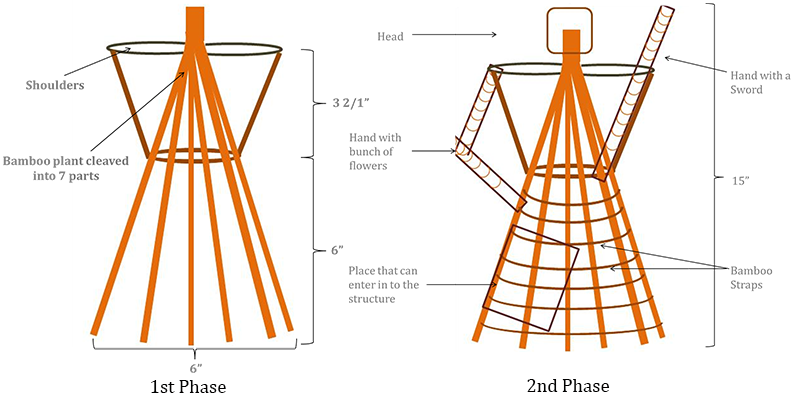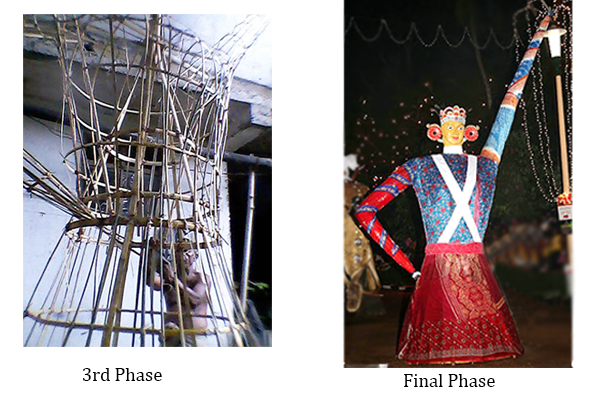Brief History of Sabaragamuwa Saman Devalaya and Its Historical Procession
Saparagamu Maha Saman Devalya was known as “Saparagrama Vihara” until a minister of King Parakumba II (1236 – 1271 AD), Arya Kamadewa, built a “devalaya” to God Saman as a result of the achievement of a vow made to this temple.
 According to the written pieces of evidence, Saman Devala Esala Maha Perahara has started in the period of King Parakramabahu VI (1415-167 AD). Later King Seethawaka Rajasinghe (1581-1592 AD) has included Dalada Perahara which consists varieties of traditional dances into the Saman Devalaya Esala Maha Perahara.
According to the written pieces of evidence, Saman Devala Esala Maha Perahara has started in the period of King Parakramabahu VI (1415-167 AD). Later King Seethawaka Rajasinghe (1581-1592 AD) has included Dalada Perahara which consists varieties of traditional dances into the Saman Devalaya Esala Maha Perahara.
Mahabamba Kolama; Material Culture on the Move
One of the very attractive and significant items in this Perahara is “Mahabamba Kolama” also known as, Maha Bamba, Maha Baba, Baba Kolama, and Maha Pambaya. Mahabamba is a unique item in the Saman Devala Perahara carried at the head of the Perahara.
It is believed to have been introduced by King Seethawaka Rajasingha to symbolize him when he could not attend the Perahara in person. Some say it depicts King Ravana’s brother Kumbakarana. Another belief is that this is a combination of Vibishana and Ravana.

The image depicts Mahabamba in the Saparagamuwa Saman Dewala Perahera in 1886 ()
Saman devala maha perahara consisting following three main processions. Mahabamba kolama is included in the third possession; Maha Perahera.
1. Kumbal Perahara (5 days)
2. Weedi Perahara or Dewele Perahara (5 days)
3. Maha Perahara
Dalada perehara
Paththini perahara
Bisodevi perahara
Kumara deva perahara
Samandevi perahara
The main structure of Mahabamba is about 15 feet tall, made by one bamboo plant cleaved into 7 parts and tied with strips of beli bark (Aegle marmelos). The following figure gives insight into the traditional method of making Mahabamba.

The way of Making Mahabamba Wooden Structures (Illustrates by Tharaka Ananda)
These structure is begging to crate on an auspicious time and a day by a group of people descending from a specific caste that have traditionally inherited the right and traditional technique of making and carrying Mahabamba in the proseccion. Thus is has become a traditionally validated metirial culture. On the auspicious day and time responsible person has to select a strong and light bamboo plant that can be strip into seven parts and easily carried by one person. This structure is being made at about three to four days. Then about 13 sarees are used to wrap the structure which is kept inside the devalaya and only given out when making the Mahabamba.

Left: Mahabamba Wooden Structure, Right: Completed and Decorated Mahabamba one hand on the wrist and another hand has a sword (Images by Tharaka Ananda)
Mahabamba has two faces; one is godlike and the other is evil like with five cobra hoods. There is a sword in one hand signifying ferociousness; the other hand is kept on the hip with a bunch of flowers signifying virtuousness. “Kolakkara Lineage” in “Colombugama” (Village near Nivithigala in Rathnapura District) was granted land “nindagam” by the king to create the Mahabamba and to keep up the tradition.
References
- Ananda, T. (2015) The Present Status of Traditional Mahabamba Kolama in the Saparagamu Maha Saman Devala Perahara, Proceeding of the 8th Research Conference, The Royal Asiatic Society of Sri Lanka, Abstract p. 230. URL: http://dr.lib.sjp.ac.lk/handle/123456789/3834
- Buddhi Himi, M. V. (2007) Dewa Puranaya- Saman Devidu Ha Saman Devola, Colombo: Sunil Shantha.
- Rajapaksha, S. (2000) Sabaragamu Narthana Kalawa, Colombo: Godage Publishers.
- Rathnapala, E.M. (2001) Sri Padaya saha Saman Deviyo, Diwulapitiya: Saraswathi Prakashana.
- Rathnapala, E. M. (1992) Saman Dewiyo, Colombo, Godage Publication.
- Wijebandara, K. and Herath, J.W. (2003) Saman Wehera Saha Sabaragamuwa Maha Saman Dewalaya, Auther Publicatoin.




